
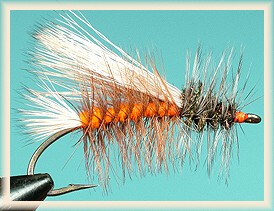 |
|
The Stimulator
|
|
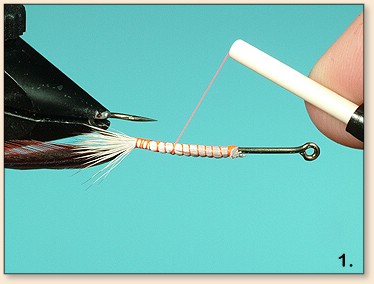 1. Place the hook in the vise and apply a thread base that covers the back two-thirds of the hook shank. Note: I'm using a contrasting thread color so you can easily observe the relationship between the materials and the thread. Cut a small bundle of elk hair from the hide and remove the under fur and short fibers. Even the tips in a hair stacker then tie the hair to the top of the shank forming a tail about as long as the distance of the gape. Stop the thread even with the hook point then trim off the waste hair ends. Select a brown saddle hackle that is sized for a hook smaller than the one in the vise. Strip the fuzzy fibers from the end of the stem and tie it to the underside of the shank directly above the hook point using two thread turns.
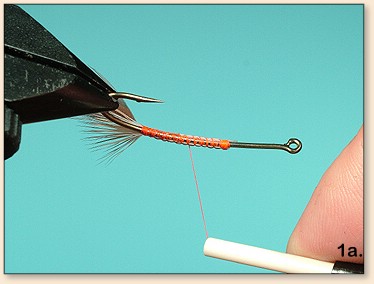 Now we will practice advancing the thread forward by hand as well as rotating the vise to speed up the process. Stop at the one-third point and leave the bobbin there for the next step. Now, rotating the vise and wrapping with the tying hand wasn't too hard was it?
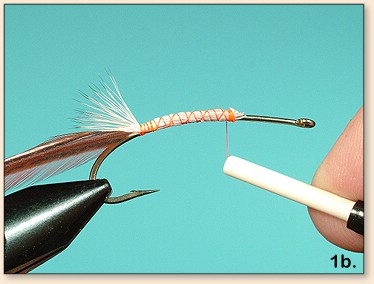
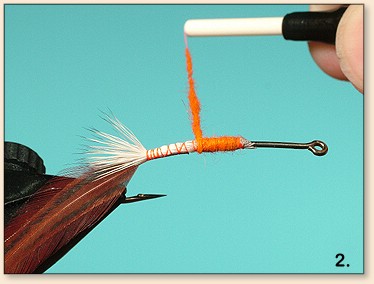 2. Apply wax to the thread, touch the dubbing to the coated area, and twist it to form a strand of yarn with a thread core. Starting at the one-third point, wrap the dubbed thread back to meet the hackle thus forming the body. Rotate the vise while hand wrapping to again practice this two-way technique.
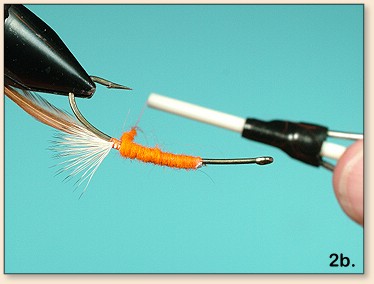 I like to stop rotating the vise with the hook up side down a bit short of the end of the body then finish wrapping the last couple of turns by hand. This is one way to avoid cutting the thread on the hook point.
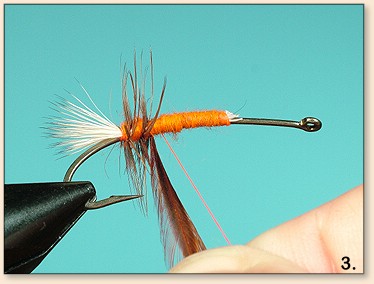 3. Wind the last couple of turns to complete the body. Tie in body hackle. Grasp the feather and thread with the thumb and forefinger making certain the thread is in front of the hackle.
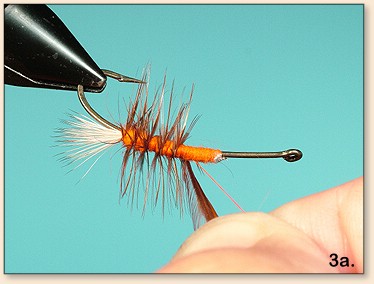 Rotate the vise to palmer the hackle forward to the front of the body. Tie off and trim the feather at the front of the body.
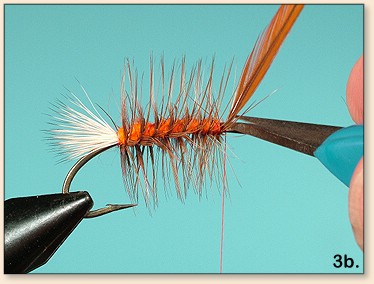
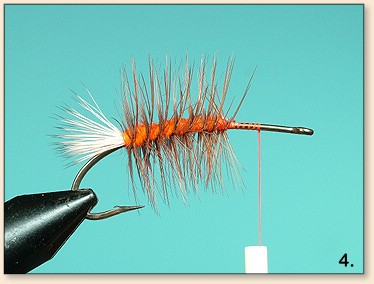 4. After trimming the excess hackle then wrap the thread forward about three turns. Select, clean, and stack a clump of elk hair. Tie it to the hook to form a wing that is long enough to reach the end of the tail. Trim off the excess hair at a fairly severe angle.
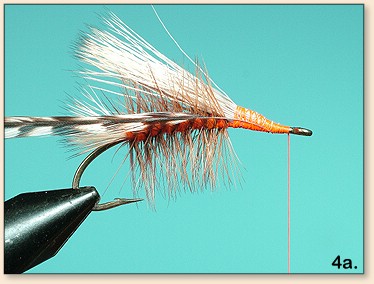 Prepare a grizzly saddle feather by stripping the fuzzy material from the base of the stem. It should be a size smaller to match the fibers on the brown feather. Tie it to the hook at the front of the body. Wrap the thread forward to the hook eye covering the trimmed wing ends in the process.
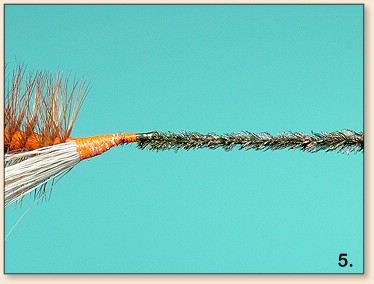 5. Select several strands of peacock herl and tie them to the front of the hook shank by their tips. Grasp the herl and the thread with the right thumb and forefinger.
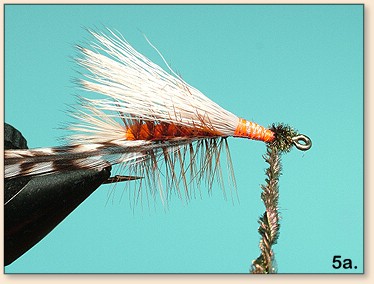 Pull the unit out straight in front of the hook and rotate the vise to construct a strand of peacock chenille with a thread core. Bring the chenille back perpendicular to the hook shank and rotate the vise to wrap it back to meet the grizzly hackle.
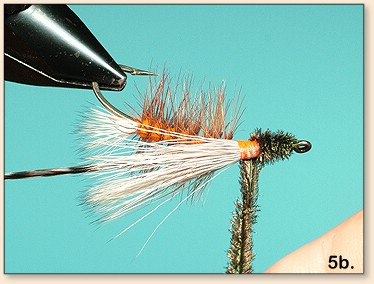
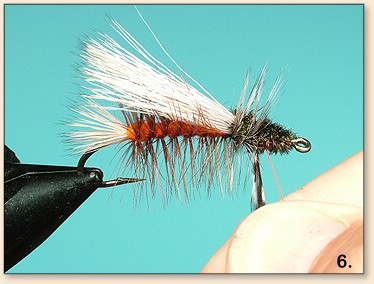 6. Finish wrapping the peacock herl, tie it off in front of the hackle, and trim the waste ends. Bring the hackle and thread together (thread to the front) and rotate the vise to palmer the hackle forward over the head of the fly.
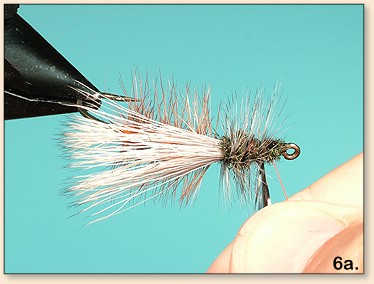 Tie off the hackle and trim the excess feather. Complete a whip-finish and trim the thread from the hook. Finish the fly with a coating of Aqua Head.
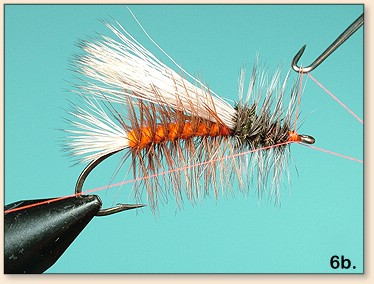
Author's Notes:
|
|
|
|
|